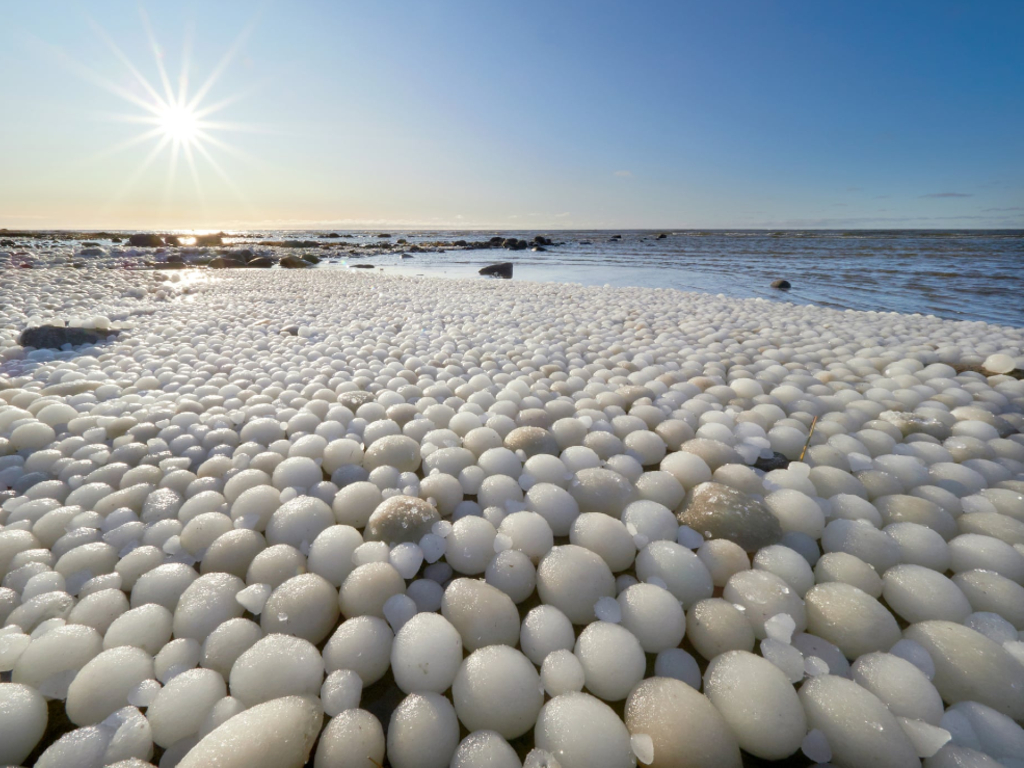A rare discovery in Finland poses the question: which came first, the ice or the egg?

Risto Mattila, an amateur photographer, was hiking in Finland with his wife when they came across hundreds of balls of ice.
The two were walking along Marjaniemi Beach on Hailuoto Island on Sunday when they found the “ice eggs.” One of them, he said, was as large as a football.
“It was an amazing view,” he told the Guardian. “I have never seen this phenomenon before.”
READ MORE: Are winter tires worth it? How to put your best wheels forward in snow and ice
Mattila shared a photo of the ice eggs on his Instagram account, simply captioning it: “Snowball sea.”
“I was with my wife at Marjaniemi beach,” he explained to the BBC. “The weather was sunny, about -1 C, and it was quite a windy day.
“That was an amazing view. I have never seen anything like this during 25 years living in the vicinity.”
According to CNN, ice balls like these occur when rough water near the shore breaks a layer of slushy ice.
The broken-up slush then builds up and sticks together, rolling in the waves to eventually form into a ball and freeze.

Sirpa Tero also witnessed the phenomenon while in Hailuoto around the same time Mattila and his wife were there.
Tero also shared a photo of the ice balls to Instagram.
Jouni Vainio, an ice specialist at the Finnish Meteorological Institute, said this typically occurs once a year, though it is rare to spot.
READ MORE: Human-made ‘mammoth traps’ found at 15,000-year-old site in Mexico
Many weather elements need to come together to create the perfect circumstances for ice eggs to form.
“You need the right air temperature (below zero, but only a bit), the right water temperature (near freezing point), a shallow and gently sloping sandy beach and calm waves, maybe a light swell,” he told the Guardian.
“You also need something that acts as the core,” he continued. “The core begins to collect ice around it and the swell moves it along the beach, forward and back. A small ball surface gets wet, freezes and becomes bigger and bigger.”
Dr. James Carter, a geography and geology professor at Illinois State University, explained to the Guardian that this often happens in autumn during the seasonal shift.

It’s the perfect time of year, he said, when ice is just starting to form to create the slush needed.
“I can picture the back-and-forth motion of the surface shaping the slushy mix,” he said. “Thanks to the photographer who shared the photos and observations, now the world gets to see something most of us would never be able to see.”
The phenomenon is not limited to Scandinavia, however.
Back in 2017, the shores of Lake Huron and Lake Michigan saw the formation of a huge number of ice balls, the Weather Network reported at the time.
—




Comments